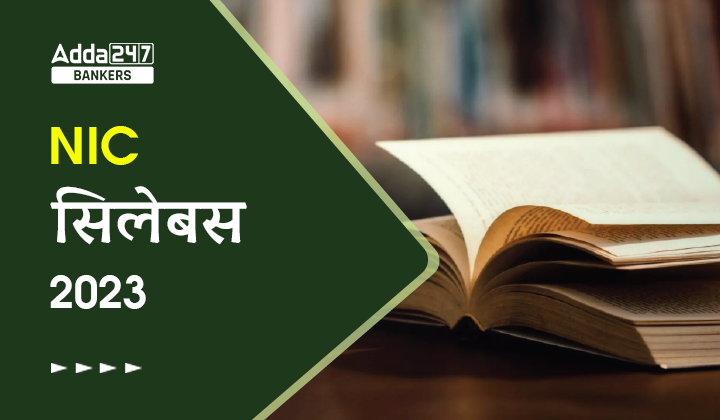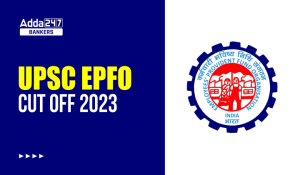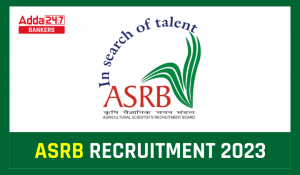NIC Syllabus 2023
राष्ट्रीय सूचना आयोग ने साइंटिस्ट के 598 पदों पर भर्ती के लिए अधिसूचना जारी की है। यदि आप परीक्षा पास करने के लिए आपको NIC परीक्षा का सिलेबस और परीक्षा पैटर्न के बारे में पता होना चाहिए। सिलेबस और परीक्षा पैटर्न व्यवस्थित तरीके से तैयारी करने में सहायक होते हैं। आधिकारिक अधिसूचना के अनुसार, भर्ती प्रक्रिया में साइंटिस्ट-‘B’ पद के लिए एक ऑनलाइन परीक्षा और साक्षात्कार होगी। साइंटिस्ट ‘B’ के लिए लिखित परीक्षा में दो सेक्शन – सामान्य और तकनीकी हैं। NIC सिलेबस और परीक्षा पैटर्न के बारे में विस्तृत जानकारी होना अनिवार्य है। इस लेख में विस्तृत NIC सिलेबस 2023 और परीक्षा पैटर्न (NIC Syllabus 2023 and exam pattern) दिया गया है।
NIC Syllabus 2023
तैयारी की योजना बनाने के लिए NIC सिलेबस आवश्यक है। सिलेबस के बारे में पूर्व जानकारी रखने वाले उम्मीदवार निश्चित रूप से दूसरों पर बढ़त लेने में सक्षम होंगे। समय प्रबंधन में सिलेबस और परीक्षा पैटर्न उपयोगी है। ऑनलाइन लिखित परीक्षा अनिवार्य है और इसमें दो सेक्शन सामान्य और तकनीकी हैं। यहाँ इस पोस्ट में, हमने NIC सिलेबस को विस्तार से कवर किया है।
NIC Syllabus Overview
आपके लाभ के लिए, हमने यहाँ NIC परीक्षा का सिलेबस और ओवरव्यू दिया है। NIC परीक्षा का ओवरव्यू इस प्रकार है।
| NIC Syllabus 2023: Overview | |
| Organization | National Institute of Electronics and Information Technology (NIELIT) |
| Exam Name | NIC Exam 2023 |
| Post | Scientist, Scientific Officer Engineer, Scientific/Technical Assistant |
| Vacancy | 598 |
| Category | Government Job |
| Job Location | All Across India and Outside India |
| Application Mode | Online |
| Selection Process | Depends upon the post |
| Official Website | https://www.calicut.nielit.in/nic23/ |
NIC Exam Pattern
विस्तृत परीक्षा पैटर्न के साथ NIC सिलेबस आधिकारिक अधिसूचना में दिया गया है। लेकिन अब आपको बार-बार आधिकारिक अधिसूचना देखने की जरूरत नहीं है। यह परीक्षा दो पदों के लिए आयोजित की जाएगी और उनके लिए चयन प्रक्रिया यहाँ दी गई है।
| NIC Post | Selection Process |
| Scientist A | Only Online Written Exam |
| Scientist B | Online Written Exam With Interview |
NIC Exam Pattern For Written Exam
उम्मीदवारों को ध्यान देना चाहिए कि परीक्षा में दो सेक्शन – सामान्य और तकनीकी हैं। भर्ती के लिए विस्तृत परीक्षा पैटर्न नीचे दिया गया है।
- प्रश्न पत्र में 120 बहुविकल्पीय प्रश्न (MCQs) होंगे।
- परीक्षा की कुल अवधि 3 घंटे है।
- प्रश्न पत्र में 65% प्रश्न तकनीकी सेक्शन से और 35% प्रश्न सामान्य सेक्शन से होंगे।
- प्रत्येक प्रश्न 1 अंक का है।
- प्रत्येक गलत उत्तर के लिए 0.25 अंक कटेंगे।
|
NIC Syllabus 2023: Exam Pattern |
|
|||
| Section | Technical | Generic | Total | Time |
| No. of questions | 78 | 42 | 120 | 3 hours |
NIC Scientist ‘B’ Syllabus
भर्ती अधिसूचना के अनुसार विस्तृत सिलेबस नीचे दिया गया है। आपको ध्यान देना चाहिए कि तकनीकी प्रश्नों का वेटेज अधिक होता है इसलिए उसी के अनुसार तैयारी करनी चाहिए। यहाँ परीक्षा के लिए विस्तृत सिलेबस की सूची दी गई है।
| NIC Syllabus 2023 Scientist ‘B’ : Topic Wise | |
| Section A: Generic | |
| S. No | Topics |
| 1. |
|
| NIC Scientist ‘B’ Syllabus 20223 Section B: Technical(Computer Science) | |
| 1. | Probability, Statistics and Combinatorics: Conditional Probability; Mean, Median, Mode and Standard Deviation; Random Variables; Distributions; uniforms, normal, exponential, Poisson, Binomial, Permutations, Combinations, Counting, Summation, generating functions, recurrence relations, asymptotic |
| 2. | Digital Logic: Logic functions, Minimization, Design and synthesis of combinational and sequential circuits, Number representation and computer arithmetic (fixed and floating point). |
| 3. | Computer Organization and Architecture: Machine instructions and addressing modes, ALU and data-path, CPU control design, Memory interface, I/O interface (Interrupt and DMA mode), Instruction pipelining. Cache and main memory, Secondary storage. |
| 4. | Electrical Engineering: Power Electronics, Signals and Systems, Electromagnetic Fields, Network graph, KCL, KVL, Node and Mesh Analysis, Transient response of DC and AC networks, Sinusoidal steady-state analysis, Resonance, Super position theorem, Maximum power transfer theorem, Three phase circuits, Power and power factor in AC circuits. |
| 5. | Analog and Digital Communication: Autocorrelation and power spectral density, properties of white noise, filtering of random signals through LTI systems, amplitude modulation and demodulation, angle modulation and demodulation, spectra of AM and FM, Super heterodyne receivers, circuits for analog communications, Information theory, entropy, mutual information and channel capacity theorem, Digital communications, PCM, DPCM, digital modulation schemes, amplitude, phase and frequency shift keying (ASK, PSK, FSK), QAM, MAP and ML decoding, matched filter receiver, calculation of bandwidth, SNR and BER for digital modulation; Fundamentals of error correction, Hamming codes; Timing and frequency synchronization, inter- symbol interference and its mitigation; Basics of TDMA, FDMA and CDMA |
| 6. | Programming and Data Structures: Programming in modern languages viz. Java, .Net, Open Source (PHP), Python, GoLang, NodeJS, etc. Functions, Recursion, Parameter passing, Scope, Binding, Abstract data types Arrays, Stacks, Queues, Linked Lists, Trees, Binary search trees, Binary heaps, Object Oriented Programming Concepts- Object, Class, Inheritance, Polymorphism, Abstraction and Encapsulation. |
| 7. | Algorithms: Analysis, Asymptotic, notation, Notions of space and time complexity, Worst and average case analysis, Design; Greedy approach, Dynamic programming, Divide-andconquer, Tree and graph traversals, Connected competent, Spanning trees, Shortest paths; Hashing, Sorting, Searching, Asymptotic analysis (best, worst, average cases) of time and space, upper and lower bounds, Basic concept of complexity classes –P, NP, NP-hard, NPcomplete |
| 8. | Compiler Design: Lexical analysis, Parsing, Syntax directed translation, Runtime environments, Intermediate and target code generation, Basics of code optimization |
| 9. | Operating System: Processes, Threads, Inter-Process communication, Concurrency, Synchronization, Deadlock, CPU scheduling, Memory management and virtual memory, File systems, I/O systems, Protection and security, |
| 10.
|
Databases: ER-model, Relational Model (relational algebra, tuple calculus), Database design (integrity constraints, normal forms), Query languages (SQL), File structures (sequential files, indexing, B and B+ trees), Transactions and concurrency control, NoSQL Databases, question on internals of Postgres SQL |
| 11. | Information Systems and Software Engineering: Information gathering, requirement and feasibility analysis, data flow diagrams, process specifications, input/output design, process life cycle, planning and managing the project, design, coding, testing, implementation, maintenance. |
| 12. | Computer Networks: ISO/OSI stack, LAN technologies, Flow and error control techniques, Routing algorithms, Congestion control, TCP/UDP and sockets, IP(v4), IP(v6), Application layer protocols, (ICMP, DNS, SMTP, POP, FTP, HTTP), Basic concepts of hubs, switches, gateways, and routers. Wireless technologies, Network security – basic concepts of public key and private key cryptography, digital signature, firewalls. |
| 13. | Web Technologies: HTML5, CSS3, XML basic concept of client-server computing, web server, proxy server, web application development, MVC architecture, web services, frontend technologies. |
| 14. | Cyber Security and Emerging Technologies: Secure programming techniques, OWASP top 10 vulnerabilities, Concepts on IOT, Block Chain, AI, etc. |
| 15. | Cloud Technology: Compute, Network, Storage Management Technologies, Edge Computing, etc. |
NIC Syllabus 2023 Scientist ‘A’
साइंटिस्ट A के लिए सिलेबस साइंटिस्ट B के समान है, लेकिन कुछ तकनीकी विषय दोनों में भिन्न हैं, यहां साइंटिस्ट B के लिए NIC सिलेबस 2023 (NIC Syllabus 2023) का विवरण दिया गया है।
| Sl.
No. |
Topic |
| NIC Syllabus Section A: Generic 35% | |
| Logical Reasoning, Analytical Reasoning Capabilities, Quantitative and Qualitative abilities, 1
General Aptitude. |
|
| NIC Syllabus Section B: Technical (Computer Science) 65% | |
| 1. | Probability and Statistics: Sampling theorems, Conditional Probability, Mean, Median, Mode and standard deviations, Random Variables discrete and continuous distributions, Poisson, Normal and Binomial distribution, correlation and regression analysis. |
| 2. | Digital Computer Principles: Number systems- Binary, Decimal. Octal, and Hexadecimal Conversion, Arithmetic operations, Boolean expression , simplification, Postulates and theorems, Simplifications, K-map, Combinational Logic circuits – Adder, Subtractor, Multiplexer, Demultiplexer, Encode, Decoder, Sequential circuits – SR, JK, T, D, flip flops, shift registers, Asynchronous, synchronous and Module and counters. |
| 3. | Computer Organization and Architecture: Multiprocessors and microcomputers, Machine Instructions and addressing mode. ALU and data-path, CPU control design, Memory interface, I/O interface (Interrupt and DMA mode), Cache and main memory, Secondary storage, Semiconductor memory – Internal organization, SRAM. DRAM,SDRAM, Rambus Memory, ROM Technology, virtual memory, Instruction sequencing , Instruction execution, Hardwired control and microprogrammed control, micro instructions, Instruction pipelining. |
| 4. | Programming and Data Structures : Programming in C, Functions , Recursion, Parameter passing, Scope, Binding; Abstract data types, Arrays, Stacks, Queues, Linked Lists, Trees, Binary search tress, Binary heaps. |
| 5. | Object Oriented Programming: Object Oriented design concept, programming in C++ and on programming languages viz. Java, .Net, Open Source (PHP), Python, GoLang, NodeJS, etc. |
| 6. | Algorithms : Analysis, Asymptotic notation, Notions of space and time complexity, Worst and average case analysis, Design; Greedy approach, Dynamic programming, Divide and conquer; Tree and graph traversals, Connected Components, Spanning trees, Shortest paths, Hashing, Sorting, Searching. Asymptotic analysis (best, worst, average cases) of time and space, upper and lower bounds. Basic concept of complexity classes, N, NP, NP-hard, NP-complete |
| 7. | Databases: ER-model, Relational model (relational algebra ,tuple calculus), Database design (integrity constraints, normal forms), Query languages (SQL), File structures (sequential files, indexing, B and B+ trees), Transactions and concurrency control. |
| 8. | System Software: Lexical analysis, parsing, syntax directed translation, code generation and optimization, Assemblers, linkers and loaders microprocessors operating systems- processes, threads, inter-process communication , synchronization deadlocks , CPU scheduling , memory management and virtual memory , file system , I/O systems , protection and security module. |
| 9. | Information Systems and Software Engineering: Information gathering requirement and feasibility analysis , data flow diagrams, process specifications, input/output design, process life cycle, planning and managing the project , design, coding and testing, implementation, maintenance. |
| 10. | Computer Networks: IOS/OSI stack, LAN technologies (Ethernet, Token Ring), flow and error control techniques, Routing algorithm, Congestion Control, TCP/UDP and sockets IP(v4) Application layer protocol (ICMP, DNS, SMTP, POP, FTP, HTTP, HTTPS): Basic concept of hubs, switches, gateways and routers.
Network security: Basic concepts of public key and private key cryptography. Hash function, Digital Signature, Firewalls, User authentication- Token based, Biometric, Remote user authentication, Intrusion detection systems, honey pots, Denial of Service. Wireless network, 2G and 3G Networks, Bluetooth. |
| 11. | Web Technologies: HTML5, CSS3, XML basic concept of client-server computing, web server, proxy server, web application development, MVC architecture, web services, frontend and backend technologies. |





 UPSC EPFO Cut Off 2023: UPSC EPFO कट ऑफ ...
UPSC EPFO Cut Off 2023: UPSC EPFO कट ऑफ ...
 ASRB Recruitment 2023 Notification : ASR...
ASRB Recruitment 2023 Notification : ASR...
 NIC Recruitment 2023: NIC भर्ती 2023, रा...
NIC Recruitment 2023: NIC भर्ती 2023, रा...








